The Spanish first settled in my home state of New Mexico in 1598. By then, Panama City was already getting old. However, that salty scallywag of a pirate, Henry Morgan, pillaged Panama City and watched it burn in 1671. (Some say he set the fire, but documentation in Spanish archives says otherwise.)
To rebuild their city, Panamanians moved it about 8 km from the original site, onto a little peninsula in the bay, and surrounded themselves with a big wall. Those buildings and some of the wall from the 1680s onwards are today Casco Viejo or Casco Antiguo, a UNESCO World Heritage Site where the president of the Republic of Panama also resides. Bob and I spent the day roaming around the old city, admiring the architecture, marveling at the churches, meeting interesting people, and spending too much for a decent lunch.

Herrara Plaza 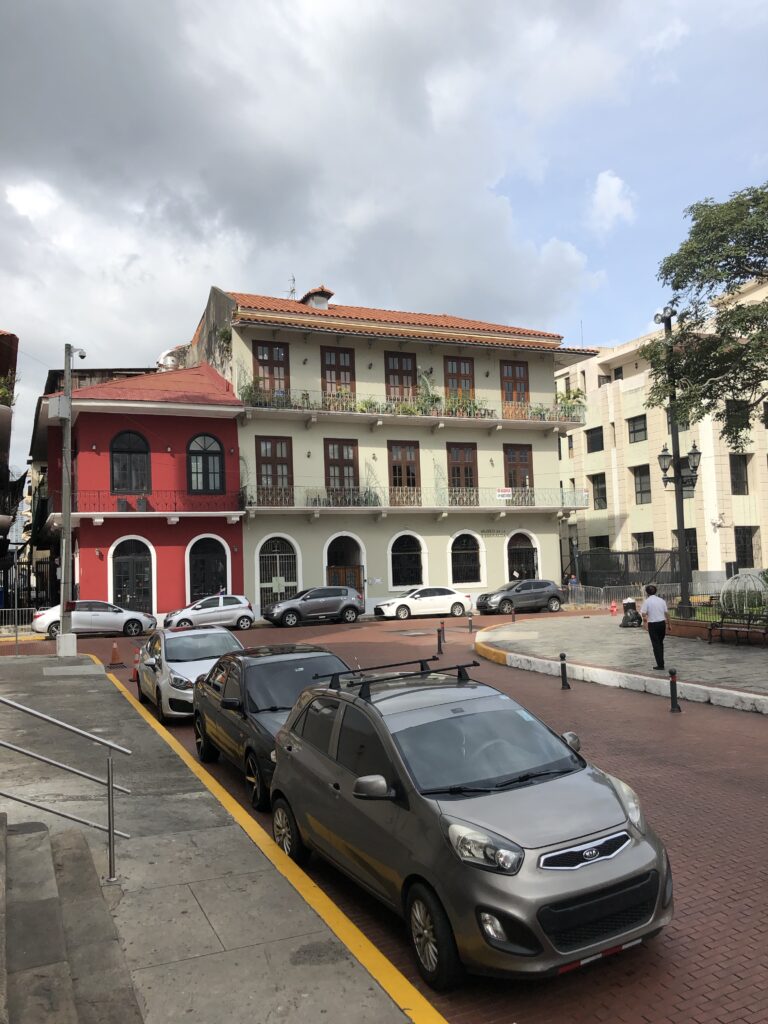
Pretty buildings 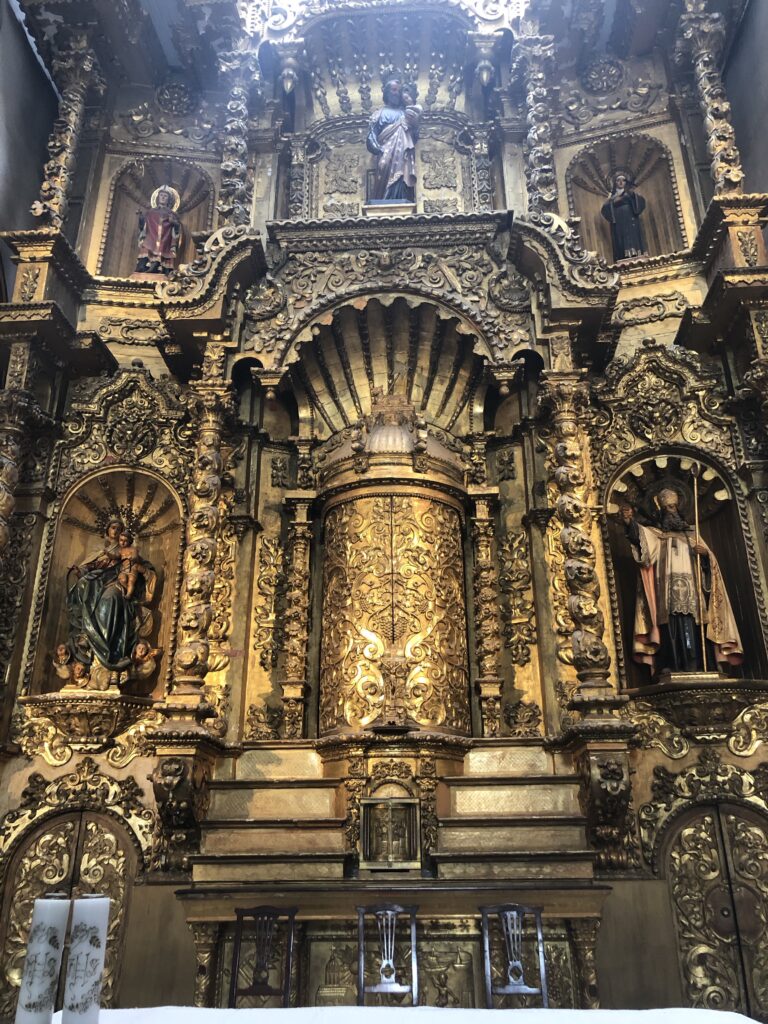
Inside San Jose 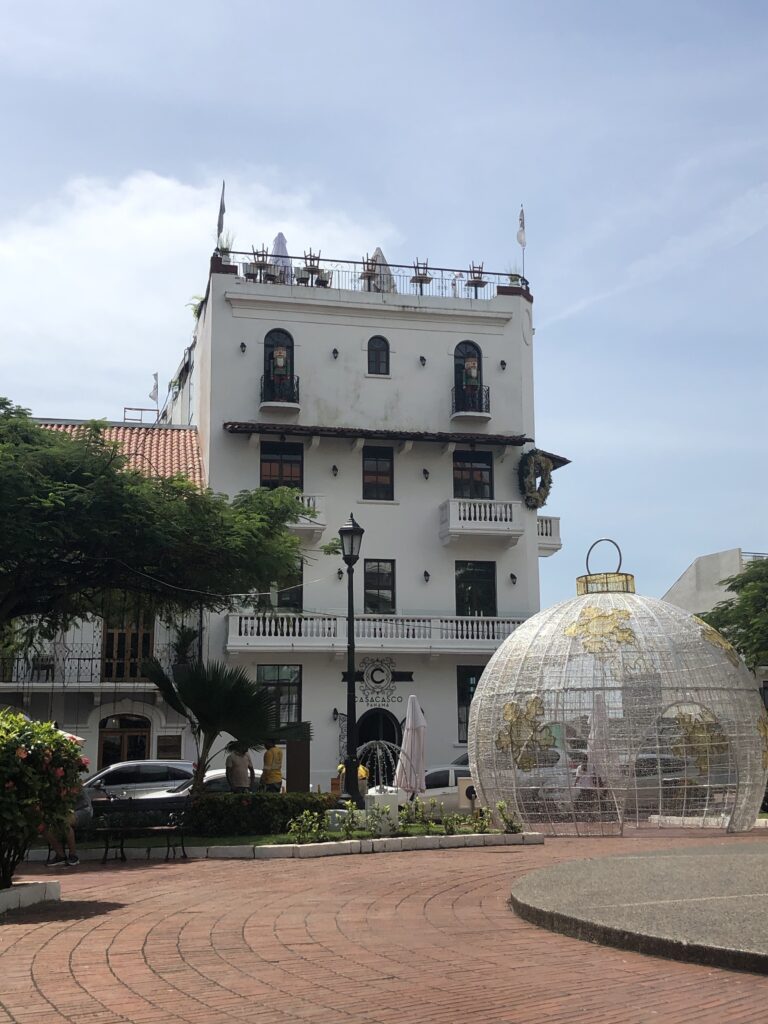
Trendy rooftop bar 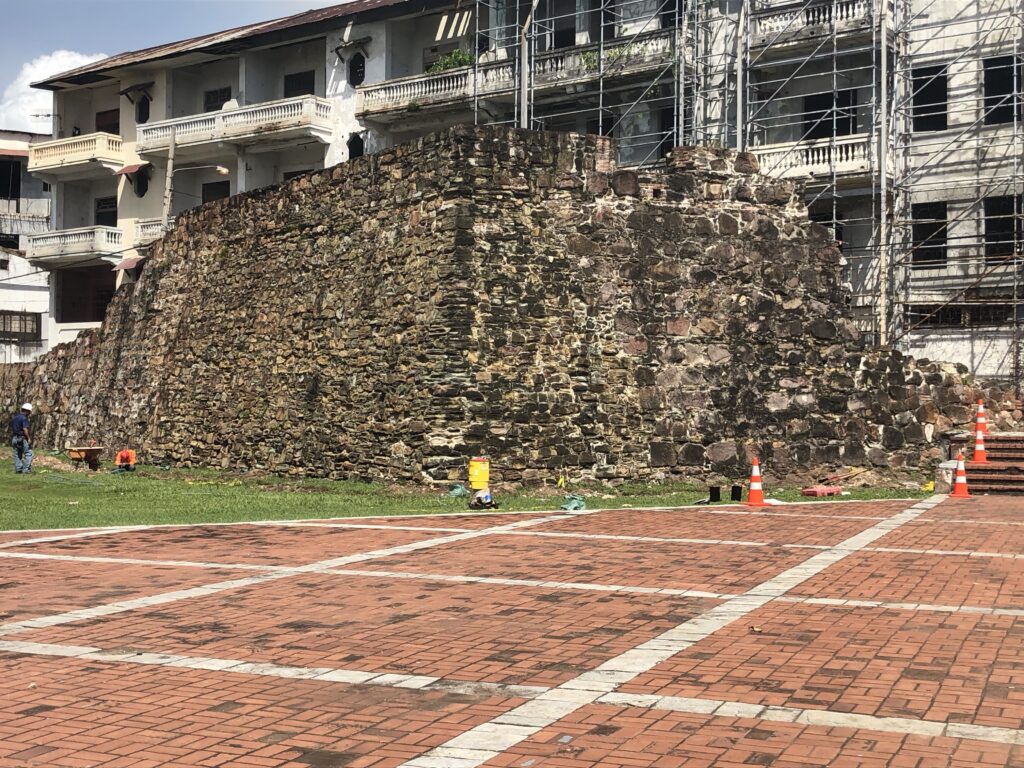
The ancient wall with a building behind it
We had visited the area during our first trip to Panama five years ago. It is a mixture of mostly three- and four-story buildings painted every color you can imagine with beautiful wrought-iron work on the windows and balconies, and stunning wood doors and accents.
We were stuck by how much development has occurred since our previous visit. The community suffered a great deal of neglect throughout the 20th century. Dramatic improvements continue now, although many buildings still require renovations, and some may just be hopeless. Additionally, if you go one block too far outside Casco Viejo, you end up in El Chorillo, a neighborhood that police officers strongly discourage gringos from visiting. We later learned that, although they are slowly moving away from Casco Viejo, gangs still rule some of the bordering streets, and young kids from El Chorillo often get caught up in their violence and activities.
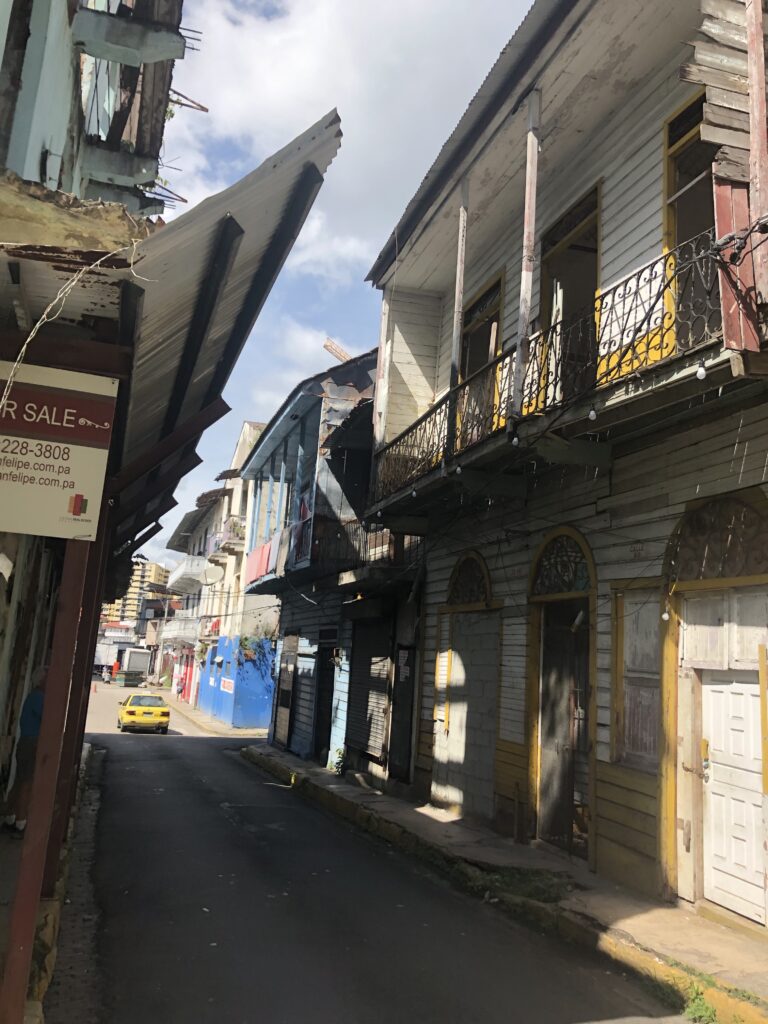
The street gets scary 
Contrasting buildings 
All blocked up 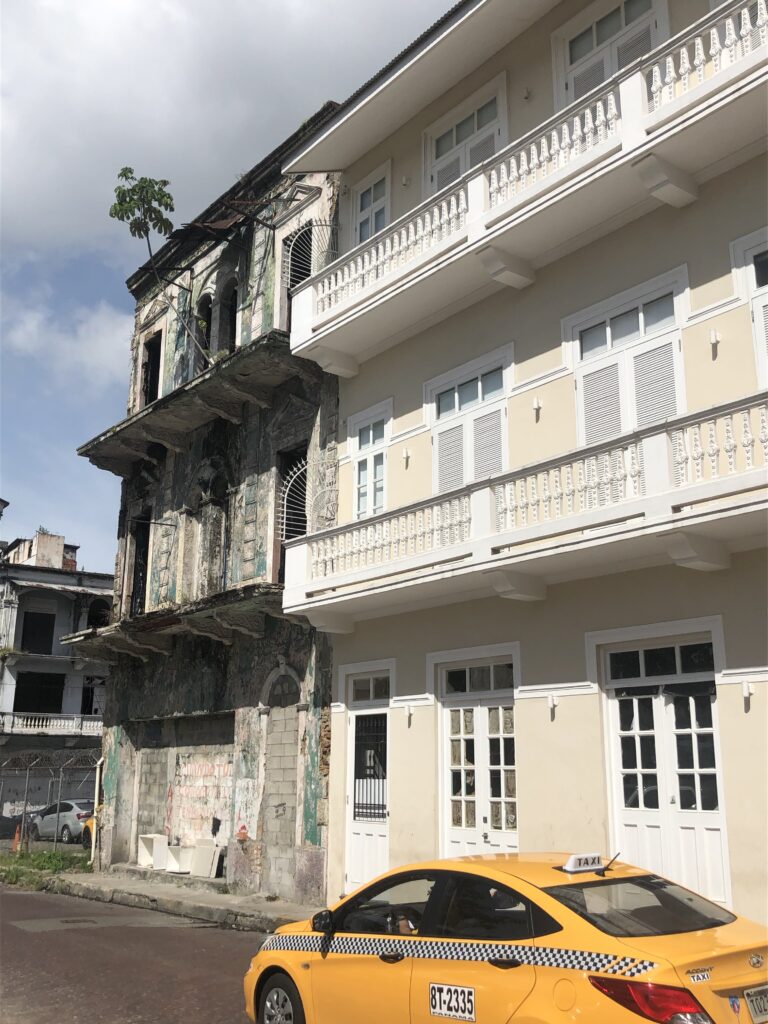
One renovated , one not 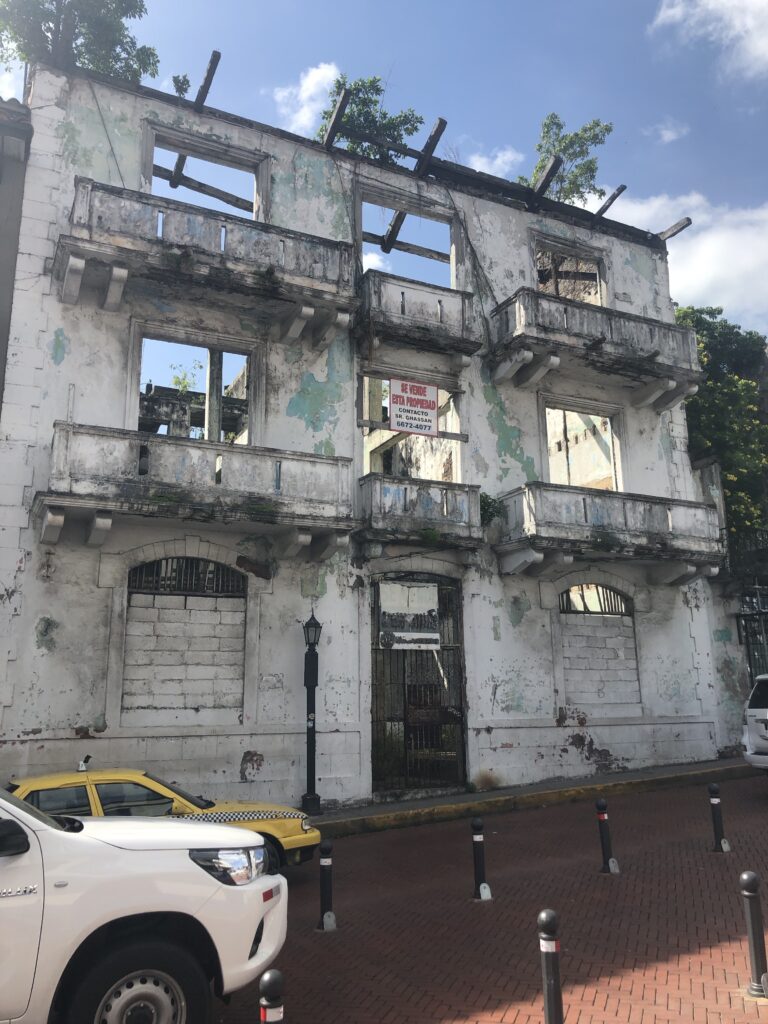
Could use some work, and a roof
We learned most of this from a gentleman, whose name we didn’t get, who grew up in the Canal Zone and had invested in what he hoped was an up and coming property. Since it’s hard to look more American than Bob and me, we are often greeted in English. In our wanderings at the very edge of the old city, as we turned the corner from one narrow, fetid calle to one that didn’t look quite so bad, this gentleman ducked out from a rolling metal door in a building with a cracked white façade and teased us about coming in to have drinks his rather rundown edifice. It dates back to the 1700s and had some gorgeous tile work on the floor. He’s not sure yet if he’s going to renovate the building or try to sell it, but that decision is coming soon. He’s a block away from trendy restaurants and boutique hotels, and major renovations are going on all around him. One block the other direction, though, folks are living in squalid conditions. The contrast is quite depressing and even frightening.
As we walked through the more developed parts of Casco Viejo, we were struck by its similarities to Santa Fe, (New Mexico, not Santa Fe, Panama, which is a real place). Casco Viejo contains a central plaza with a bandstand, a cathedral on the plaza, other beautiful churches and buildings, cultural significance, trendy apartments, expensive beautiful hotels and restaurants, and rich Spanish and indigenous history. On the other hand, the buildings, although somewhat younger than Santa Fe’s oldest, are made of brick and stone, not mud. Even in this rainy, humid environment, they last. But as poor as New Mexico is, conditions in even its most poverty-stricken neighborhoods are significantly better than anything faced by those living in El Chorillo.
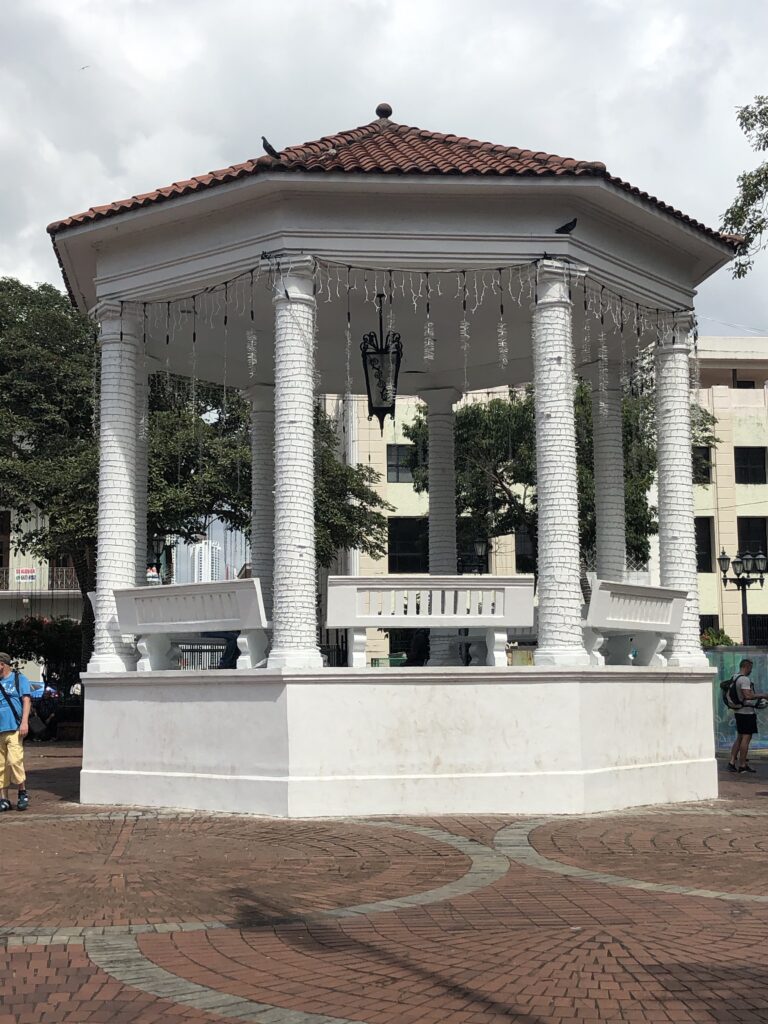
Bandstand in the plaza 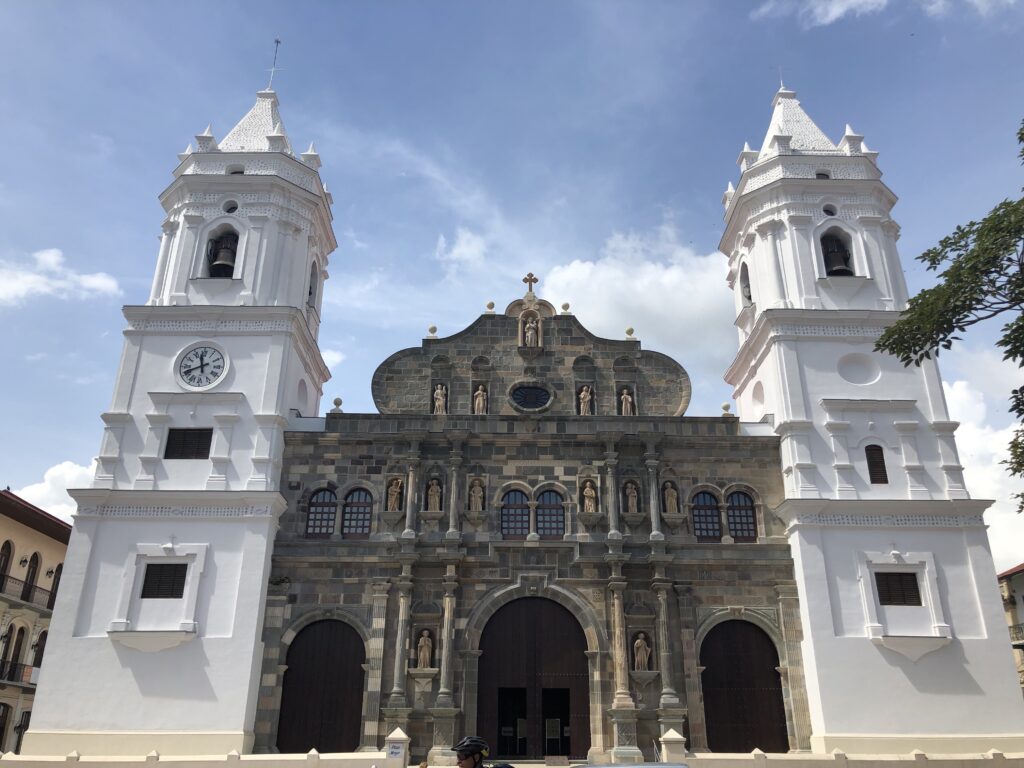
Cathedral on the plaza 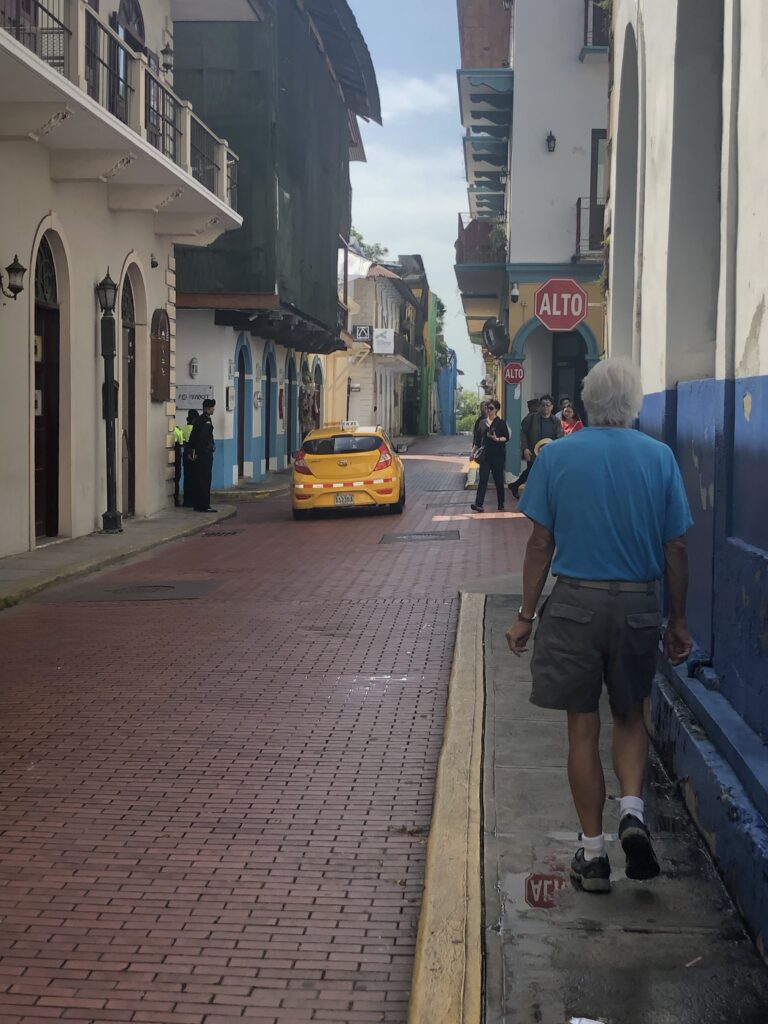
Narrow, one-way streets
We loved the many churches in the old city. My favorite was La Merced. It was one of the few buildings that survived Henry Morgan’s invasion. In fact, he used it as his headquarters while in Panama City. After he left, the stones from the church were moved to the new city site, and the church was rebuilt. The wooden ceiling inside gives a warm, cozy feel that the beautiful but expansive cathedral lacks. The golden alter in San Jose is legendary. A story that it was hidden—sunk into the ocean by a priest, in fact—to keep Morgan from capturing it makes a good tale. However, the alter post-dates Morgan by more than 100 years, so it can’t be true. (Hey, if you can’t spin good pirate yarns about gold, your community may lose some of its charm!)
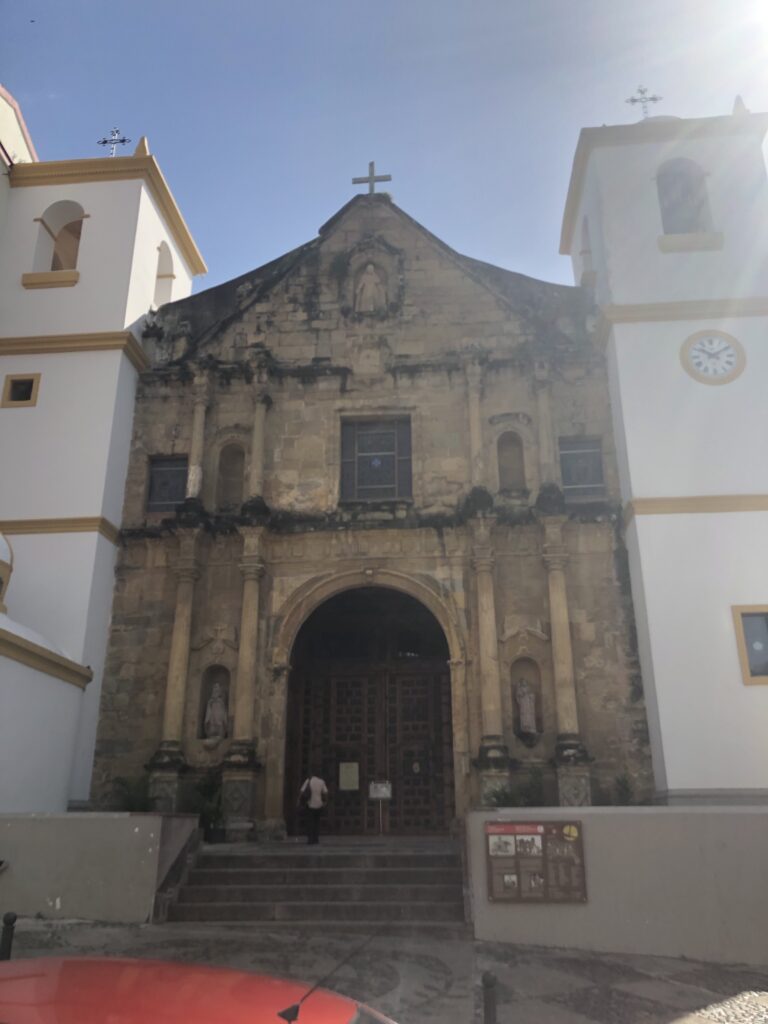
La Merced 
Interior, La Merced 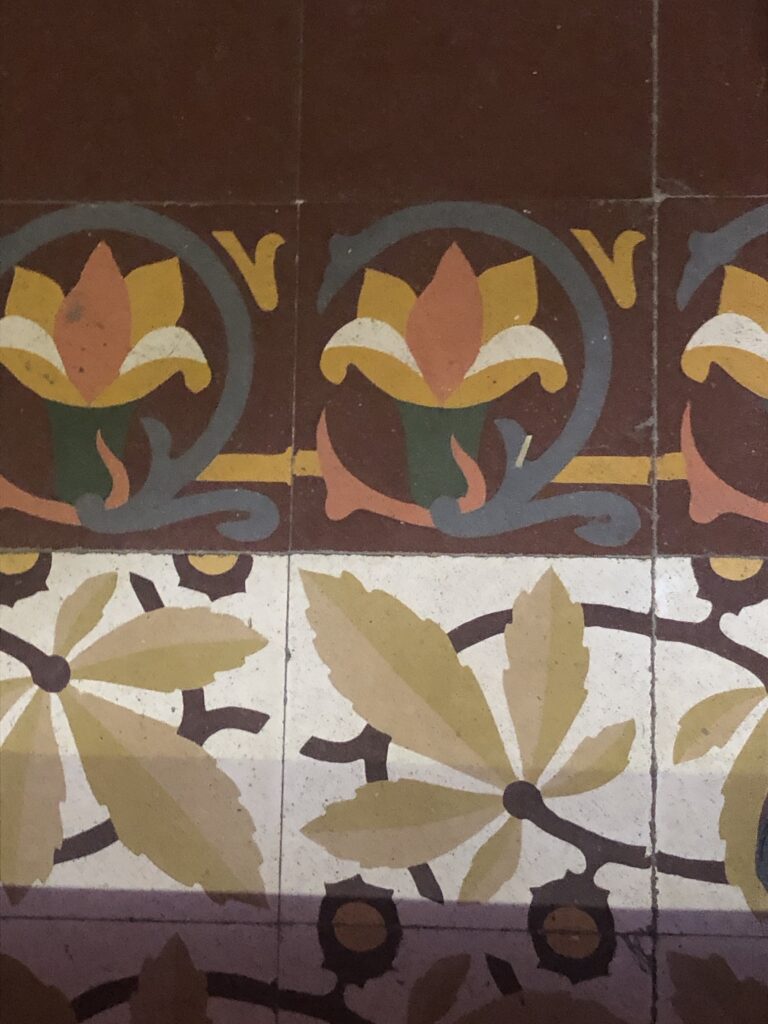
Tile in La Merced 
Organ in La Merced 
Interior, San Jose 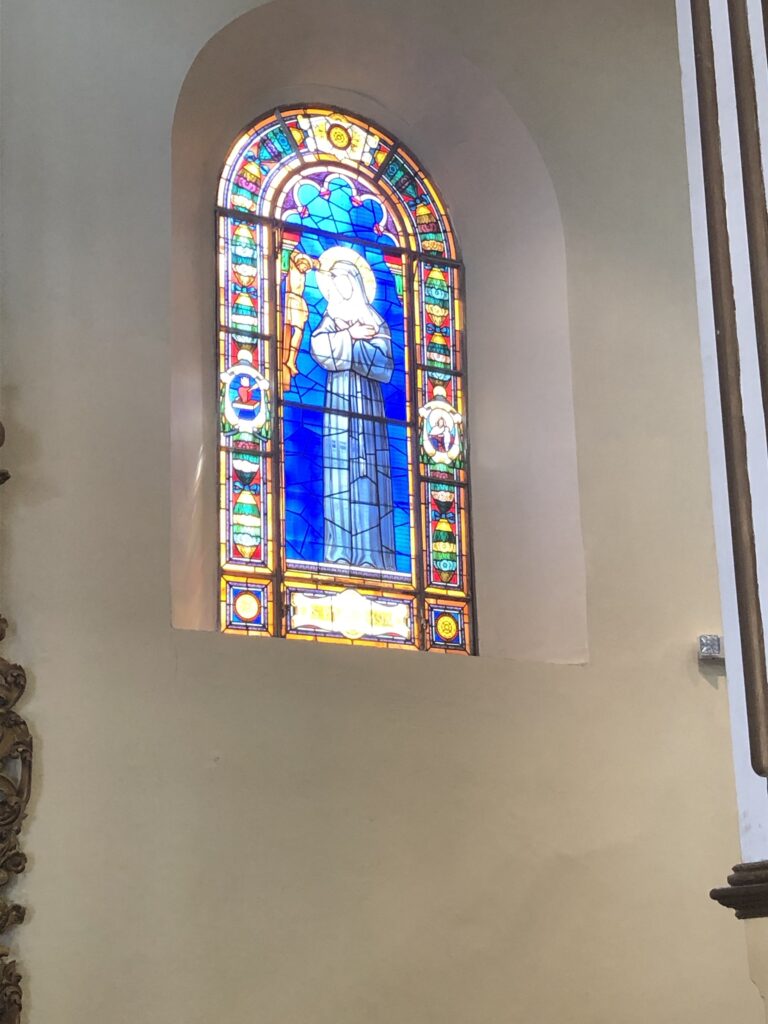

Interior, cathedral 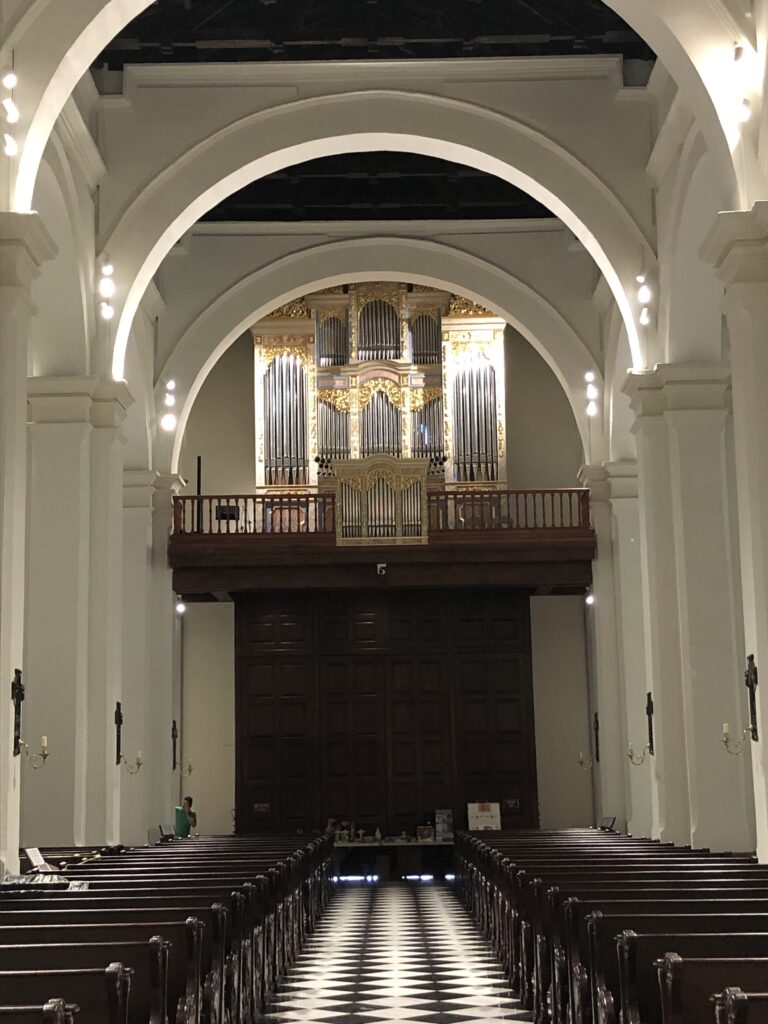
Cathedral arches 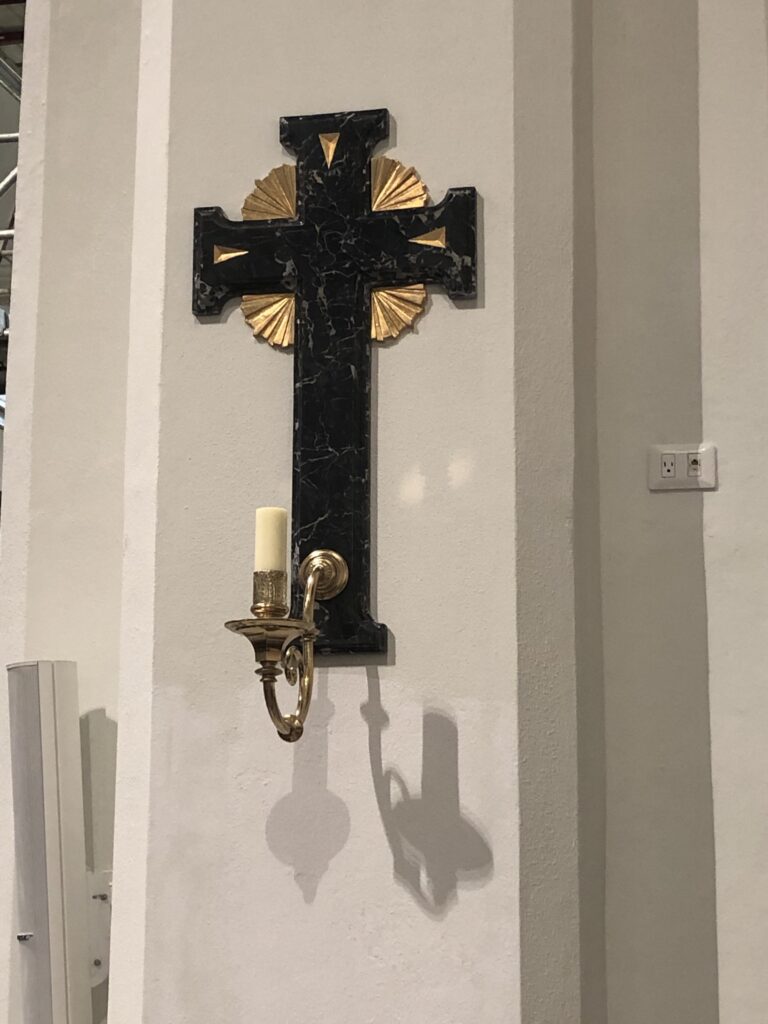
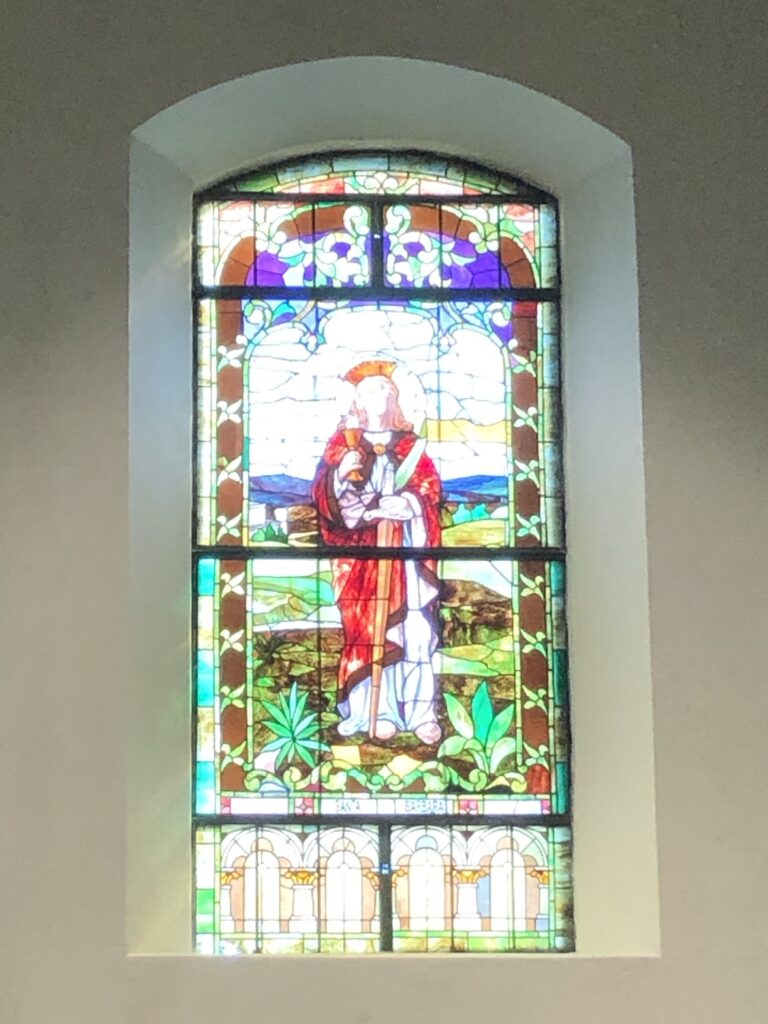
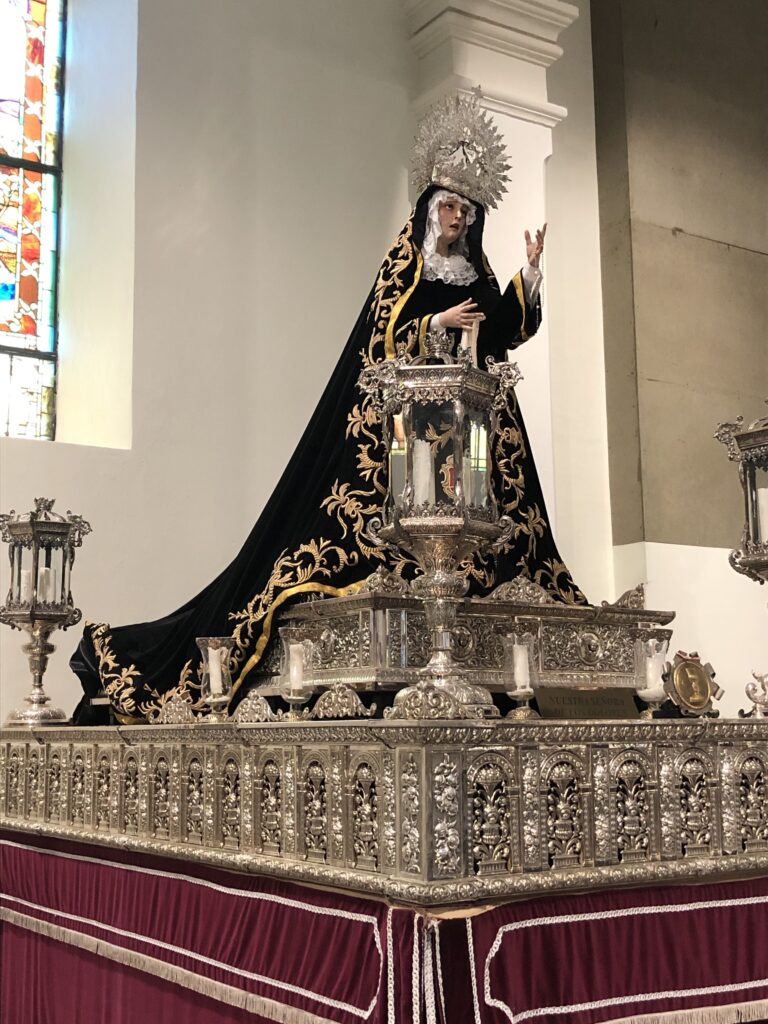
In some ways, walking around Casco Viejo reminded us more of walking around the French Quarter in New Orleans than the Plaza in Santa Fe, though. We had pink flowers rain on us from a tree. That doesn’t happen in Santa Fe! The beautiful wrought-iron work does not look New Mexican. And it turns out that the French did have a big impact toward the end of Casco Viejo’s last heyday in the late 1800s.
We learned about the French influence at the Panama Canal Museum, a huge, really informative and well-done museum that we sort of stumbled upon that had loads of information. You’d think after visiting the interpretive center at Miraflores Locks (http://heathers6wadventures.com/coolest-place-en-el-mundo/) and learning all the history we did at the world renowned Biomuseo, there wouldn’t be much else. Wrong! The museum had incredible artifacts from pre-Columbian, Spanish colonial, Panamanian Railway, French canal, and the American Canal eras. There were pirate swords and railroad conductor caps and marvelous photographs and videos of the canal construction. Every time we thought we were finished, another gallery opened up. The ticket attendant told us the museum would take about 45 minutes. More than two hours later, hunger more than anything else had us flitting through the final gallery about the canal’s 2016 expansion.
Unfortunately, no photos were allowed inside the museum. Very little of the interpretation was translated into English (and what was translated used a bad version of Google Translate!), but that gave us a great opportunity to practice our Spanish. We learned so much and highly recommend it. https://www.museodelcanal.com/
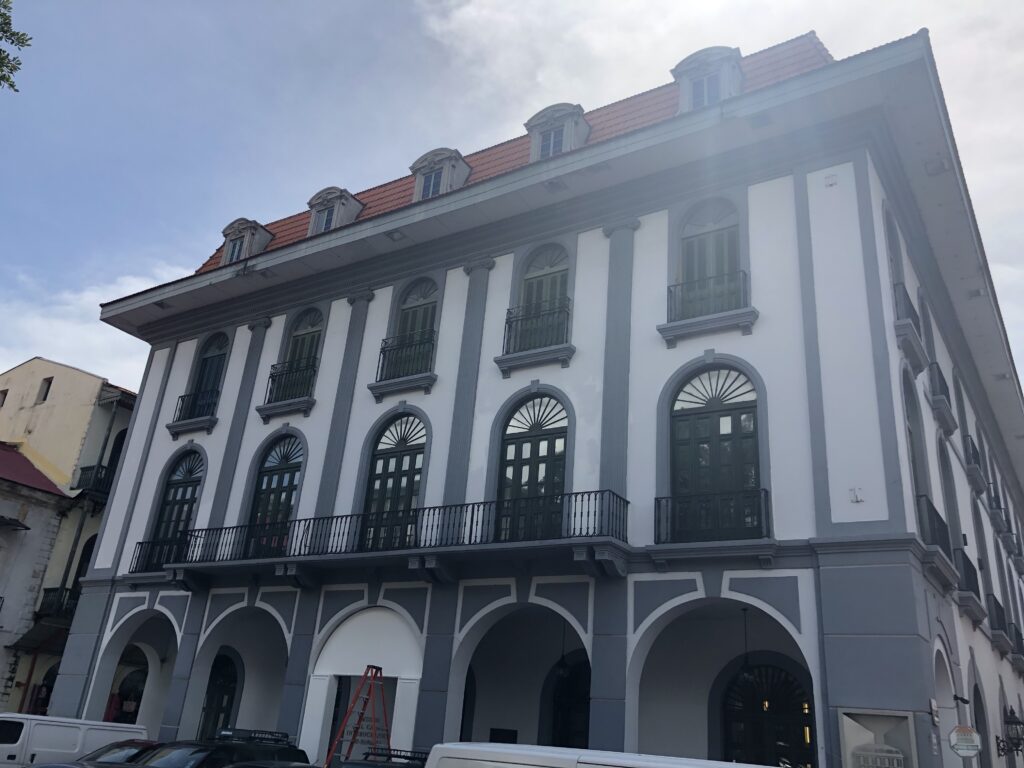
We had a wide variety of restaurants from which to chose for lunch. My growling tummy took us right across the plaza from the museum to Rene’s Cafe a charming, family-style restaurant with amazingly high ceilings and some good food. (The beer was over-priced, though. $3.50 for a Balboa? Ridiculous!) La ensalda, tortilla de espana, pan y mantequilla de hierbas, arroz, and pastel de chocolate were all excellent. Bob’s fish and my vegan stewed vegetables were just OK. We figured we were there late—had we been there at 11:30 instead of 2:30, the entrees probably would have been better.
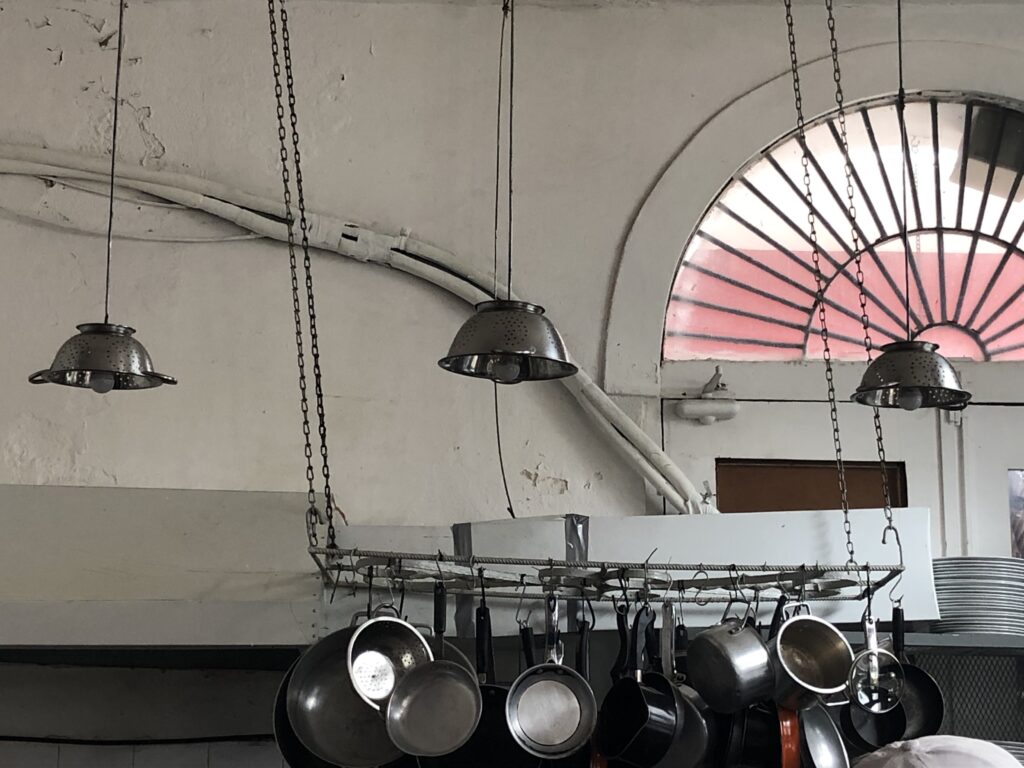
We did get a kick out of a large tour group that took up most of the restaurant. They were from Overseas Adventure Travel, my mom’s favorite touring company, and she and my step-dad had just taken that same tour a couple of years ago. El mundo es pequeno!
Since we continue to struggle with the bus system (the bus we were taking to the old city that morning turned right instead of left, like we expected), we caught an Uber home. We got stuck in a 45-minute traffic jam because of a protest near the president’s house by pensioners who don’t feel they are receiving enough. They were a pretty mellow bunch, but traffic on the narrow, one-way streets was nearly gridlocked!
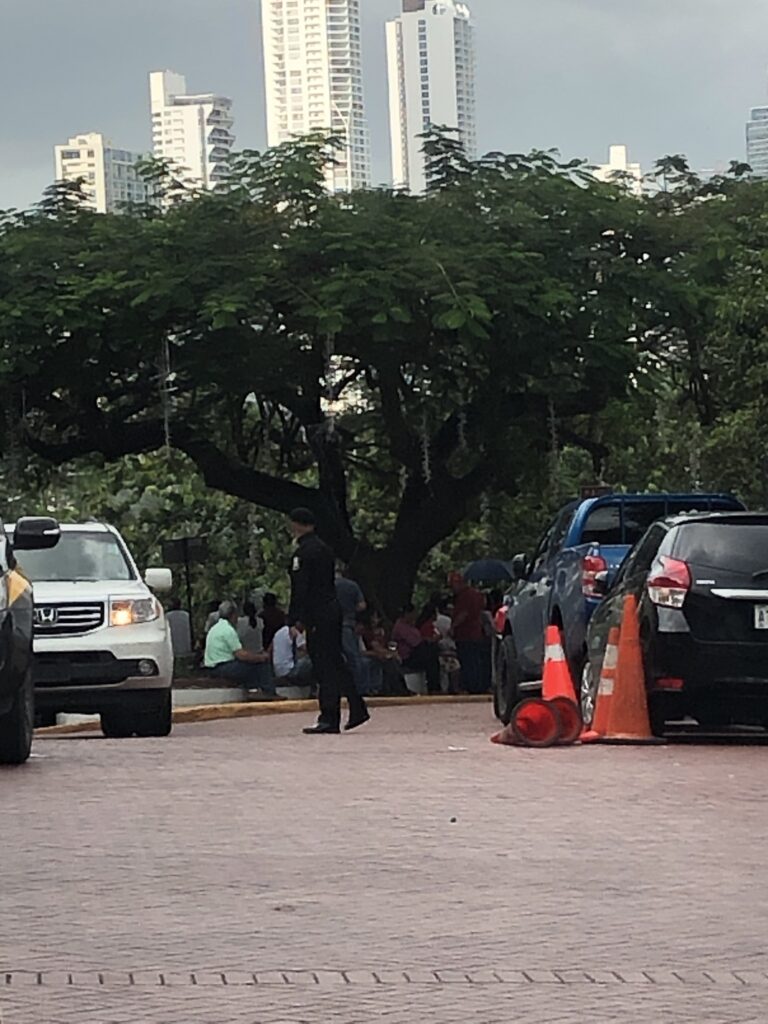
The visit to Casco Viejo has me contemplating Spanish colonial history, and the similarities and differences between the experiences in New Mexico and Panama. I’ll write more about that when I get it figured out.


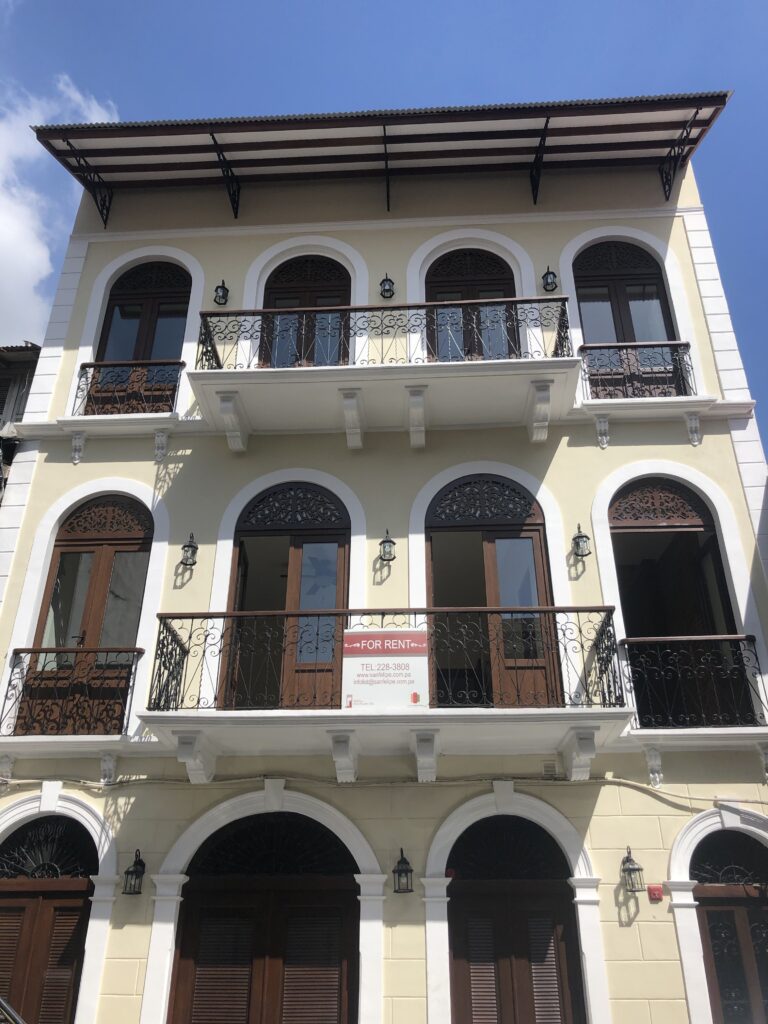
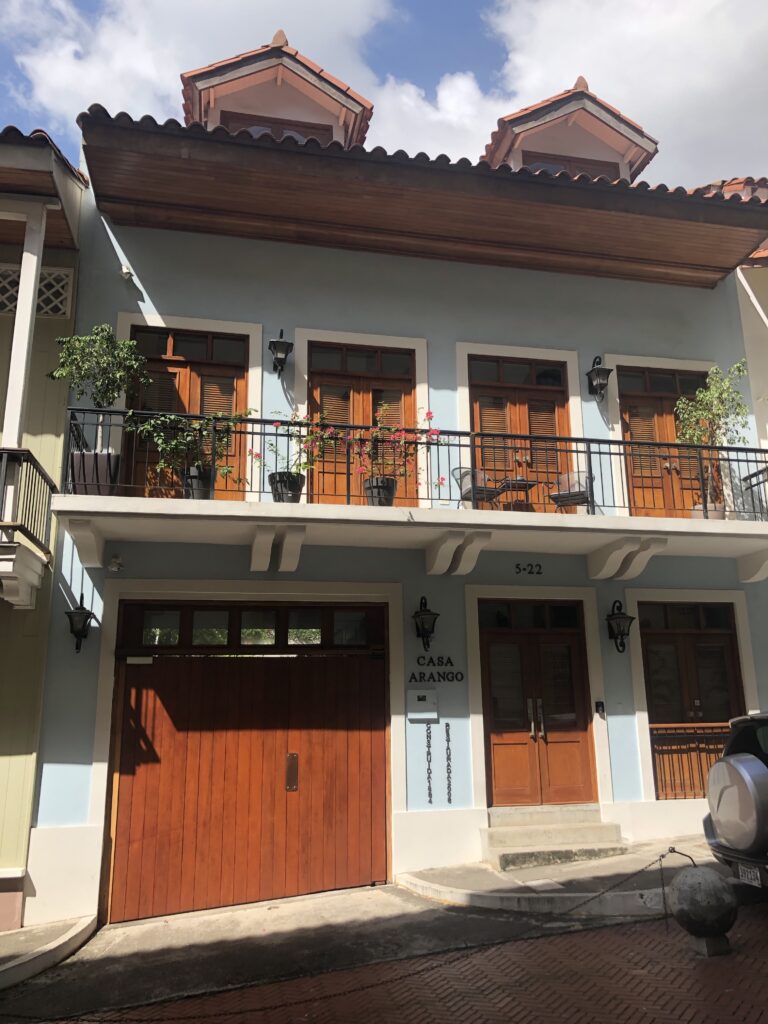
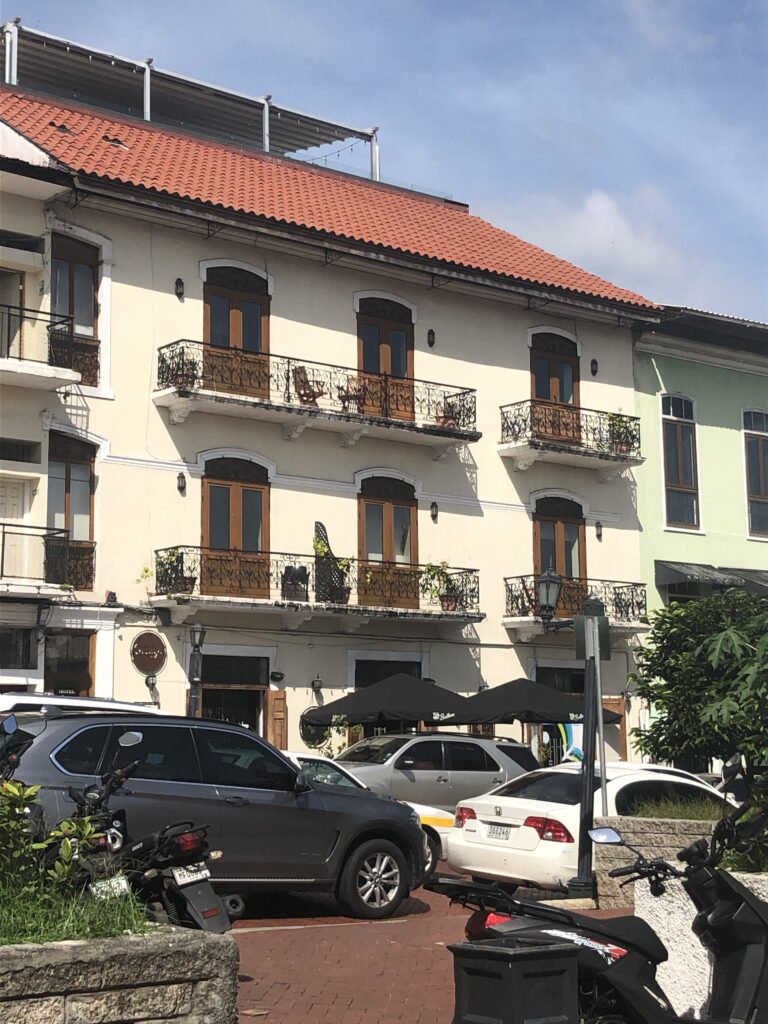
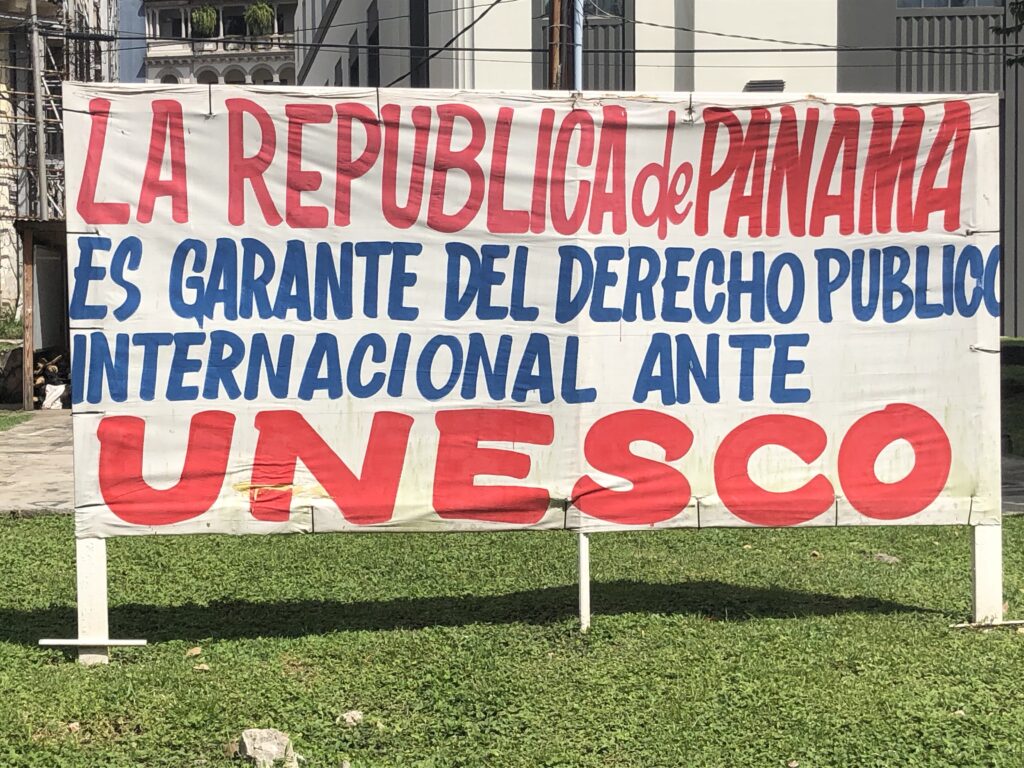
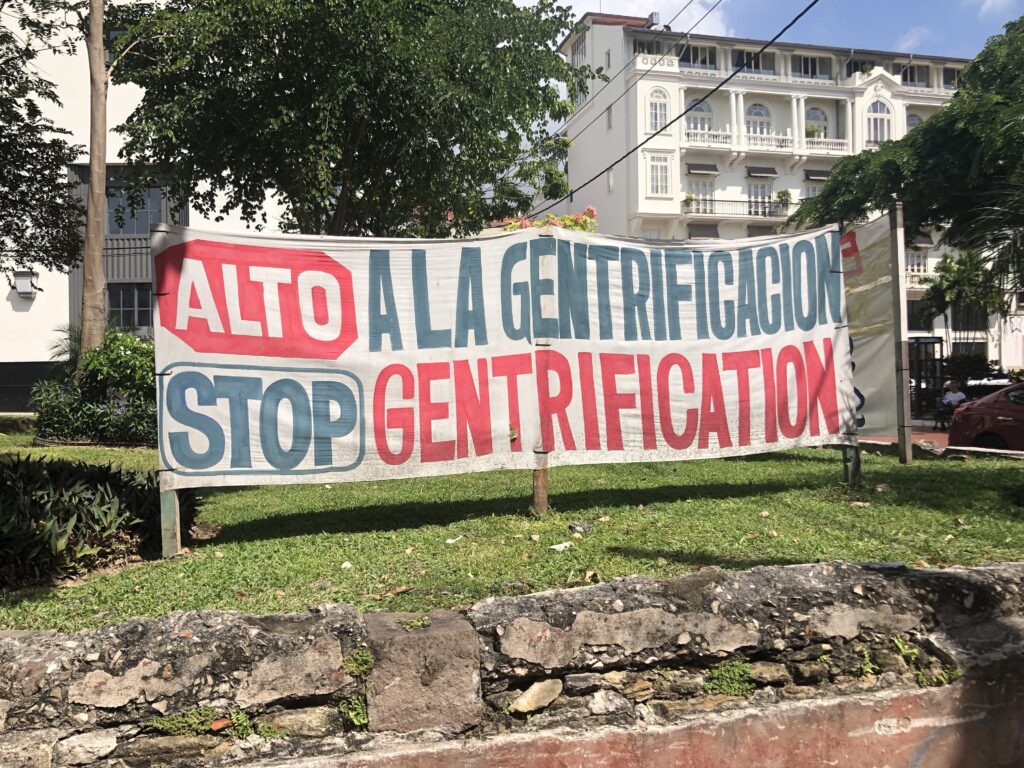
The pictures are outstanding . Thank you for sharing your adventure and research .
Thank you for the words of encouragement. I’ll definitely keep writing.
Very cool. I loved the pictures.
Thanks. It’s a really photogenic place!
Fascinating! Great blog! After reading this, I plan to visit one of these days,!
Thanks! If we decide to move to Panama some day, you will definitely have to come visit!
I thoroughly enjoyed the dialog and pictures. Very interesting and informative!